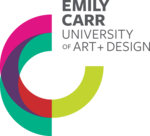Columbia College (British Columbia)
Columbia College is an independent not-for-profit two-year university transfer college located in Vancouver, British Columbia, Canada. The college is a registered charity and an incorporated Society composed of all Columbia College employees. Columbia College has about 2100 students enrolled from 61 countries around the world. A variety of first and second-year university-level courses are offered to students to complete a Columbia College associate degree and a University Transfer program is offered to students who successfully completed Senior High School. Courses offered in college are transferable to universities within and outside of the province. Moreover, the college provides a High School program and an English for Academic Purposes program which is accredited by Languages Canada.
Excerpt from the Wikipedia article Columbia College (British Columbia) (License: CC BY-SA 3.0, Authors).Columbia College (British Columbia)
Terminal Avenue, Vancouver
Geographical coordinates (GPS) Address External links Nearby Places Show on map
Geographical coordinates (GPS)
| Latitude | Longitude |
|---|---|
| N 49.271666666667 ° | E -123.09527777778 ° |
Address
Columbia College
Terminal Avenue 438
V6A Vancouver
British Columbia, Canada
Open on Google Maps







